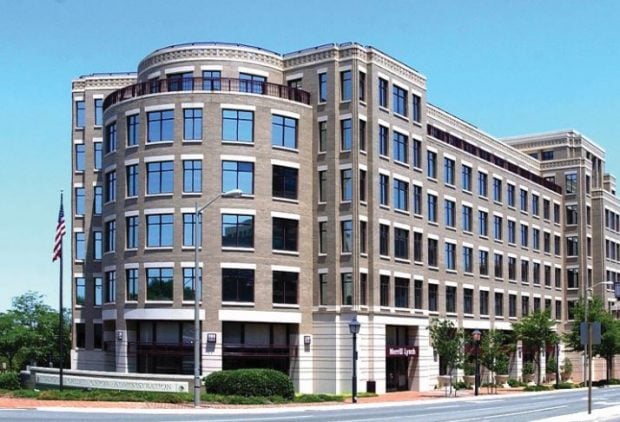WASHINGTON-The best remedy for robbery is prevention, several experts have said, particularly with the increasing number of robberies across the United States. Prevention includes several elements such as the structure and location of a credit union's offices to employee training and preparedness. According to recent preliminary data released by the Federal Bureau of Investigation (FBI), robberies jumped the most of any violent crime. In fact, robberies demonstrated a 3.9% increase between 2000 and 2001. Final figures will be available this fall. Overall the Nation's Crime Index showed a 2% increase last year over 2000, including the events of September 11. The index, measured by the FBI's Uniform Crime Reporting Program, includes murder, forcible rape, robbery, and aggravated assault in the violent crime category, and burglary, larceny-theft, and motor vehicle theft in the property category. In the other categories, murders rose 3.1%, auto theft jumped 5.9%, burglary increased 2.6%, arson was up 2%, and larceny-theft increased 1.4%. The most frequently occurring violent crime in the index, aggravated assault, showed the only decrease (-1.4%). These categories do not take into account last year's terrorist attacks for statistical consistency. With robberies on the rise, what is a credit union to do? According to CUNA Mutual, which currently bonds 95% of all credit unions in the U.S., credit unions are being hit particularly hard. Not because robbers target credit unions specifically, because studies have shown that many robbers do not even know what type of financial institution they robbed afterwards, but because credit unions are becoming their own entities now, CUNA Mutual Public Relations Specialist Sydney Lindner said. Formerly, credit unions were often single sponsors with branches inside the sponsor's building and, therefore, were not recognized as financial institutions by would-be robbers. "The company attributes this, in part, to the fact that credit unions have evolved from single-sponsor institutions located in company and organization buildings to full community charters that have street front operations. When credit unions were in the center of office and work buildings, robbers did not recognize them as financial institutions; now they do," Lindner explained. CUNA Mutual experienced a 17% increase in claims from 1999 to 2000 and an even greater increase of 22.5% from 2000 to 2001 due to robberies. The company offers several services to its policyholders to help prevent robberies, including a loss prevention library on their Web site and robbery prevention training with on-site security analysis and recommendations. Recently CUNA Mutual also began offering post-robbery trauma insurance coverage, which will reimburse for employees' counseling after a robbery if CUNA Mutual covers the loss associated with the robbery. Lindner said she was unsure how many customers had taken advantage of this new coverage. Prevention of a robbery begins with site selection. "Credit unions should be accessible and convenient to members but not overly vulnerable to robbers." CUNA Mutual suggests. "Risk avoidance should be your first tool." A site surrounded by one-way streets, heavy traffic, and arterial intersections can impede a robber's escape and make it predictable or keep a potential robber from choosing that particular credit union at all. The Crime Index increased in all city population groups, with the largest increase of 3.9%, recorded in cities with populations of 250,000 to 499,999, and the smallest increase, 0.8%, reported for cities with less than 10,000. The Crime Index total also rose in the suburban counties 2.4%, and in the rural counties 0.6%. On a macro-scale, the FBI found that crime index totals increased more in some parts of the country than others. In the West, a 4.5% increase in crime was reported, while the South and Midwest recorded 1.9% and 0.9% increases, respectively. The Northeastern law enforcement agencies reported the only decrease with crime down 1.2%. If you build it, they won't come (hopefully) The next step in burglary prevention is building design. KDA Financial has special expertise in building security as a designer and builder of financial institutions including several credit unions and Vice President of Project Development Chip Nix recommends financial institutions "strongly consider using a professional that understands security needs." First, consulting begins with a location, which needs to balance member access with appropriate security, Nix explained. This all depends on the credit unions' field of membership and where members and potential members are primarily located. Additionally, exterior lighting is very important. While Nix said you do not want the credit union lit up like a football field for aesthetic reasons, around the ATM really needs to be well lit. Inside, precautions need to be taken ranging from simple design tools to complex electronic systems. For example, something as simple as placing teller stations at the rear of the building will allow for better visuals of members by video cameras placed above each teller's station and the entrance and exit. With expanding technology, this type of security has come a long way from 35mm still shots to black and white and color closed circuit television, and now, though expensive, digital closed circuit television is available, Nix explained. While that physical attribute of the retail area allows for better observance of a robber, it certainly is not enough to stop most criminals. Have a silent alarm system installed, Nix said. "Ultimately, what you're after is getting a high-grade alarm system," he advised. Systems are available at all levels (AA being the highest) but much of that rating comes down to line security and police response time. Alarm systems have several different kinds of triggers including the double squeeze button, which Nix said KDA usually places two at each desk. He explained that there are two buttons in case one is hit accidentally. He said there are also bill traps, which consist of a wad of cash in a particular compartment of the cash draw held in place by a clip. When the cash is removed from the clip, the connection triggers a silent alarm. Occasionally, financial institutions use dye packs, but not nearly as often as Hollywood makes it out to be. Another misconception brought about by television and movies is that there is no `bullet proof glass,' only bullet resistant. This security measure is rather costly and most often used for the drive-thru window. Some financial institutions use it at the teller lines, but most are not interested, according to Nix. He said KDA had not installed bullet resistant glass on the exterior in the 15 years he has been there. Some credit unions, such as McCoy Federal Credit Union in Orlando, Florida, are going very high tech. McCoy has removed nearly all risk of being robbed by installing remote tellers. When someone enters the credit union, they just walk up to a video monitor and a teller, safely hidden away elsewhere with the cash, conducts the transaction remotely. Not only does this system provide added security, Nix said it also increases operational efficiency. While the teller is counting the money, credit unions can advertise other products to the member. "Obviously, its not the same as sitting directly across the counter and talking to each other" directly, he admitted, but members do not find it impersonal either and actually have sought out the credit union because they had heard of this system. Greeters are stationed at the entrance to direct people. One thing that has not changed much in financial institution construction in many years is vault construction. Oftentimes, when the foundation is being laid the next thing created is a vault with one-foot thick concrete walls, floor and ceiling with three steel strips running through them. In about the last ten years, Nix said technology has allowed for modular models, but both methods are still used. After hours, this vault and a simple perimeter alarm are the only things standing between a robber and members' valuables. Other items recommended by CUNA Mutual and KDA Financial include height markers, warning lights for employees in other areas, decals advertising the presence of a security system, bait money with nonconsecutive used federal notes from outside the district in larger denominations, man traps (where a criminal can be slowed between a double door vestibule), armed or unarmed security guards, and appropriate personnel training. Additionally, before a robbery occurs be sure to eliminate excess currency and be observant; look for someone casing the credit union and keep a record. After a robbery does occur, make sure the perimeter doors are locked to prevent re-entry, call the police, safeguard evidence, and have witnesses write down what they saw. When possible, count remaining funds to try to determine the loss and keep this information confidential. Do not release any unauthorized information to the media, a CUNA Mutual brochure said. Having a good written policy on all these things can provide victims a "sense of being in control" during a robbery and possibly prevent post-traumatic stress following the event. Within 48 hours of a robbery, hold a staff meeting to obtain everyone's opinions on policies, procedures, staff training, alarm systems, surveillance systems, and discuss benefits of additional security measures, CUNA Mutual suggests. Nearly 17,000 city, county, and state law enforcement agencies voluntarily submit data to the nationwide, cooperative statistical effort of the FBI's Uniform Crime Reporting Program. These comprehensive data are published annually in Crime in the United States. [email protected]
© Touchpoint Markets, All Rights Reserved. Request academic re-use from www.copyright.com. All other uses, submit a request to [email protected]. For more inforrmation visit Asset & Logo Licensing.






